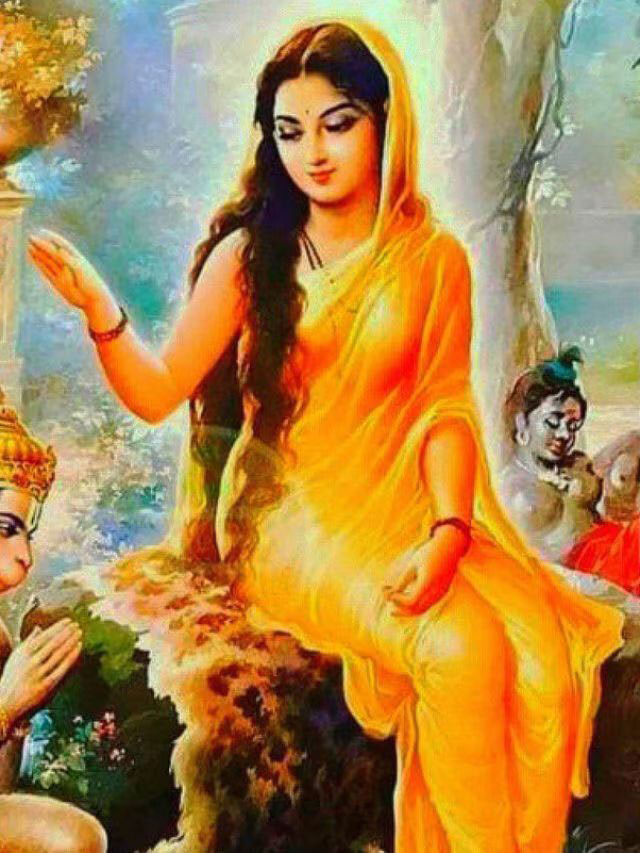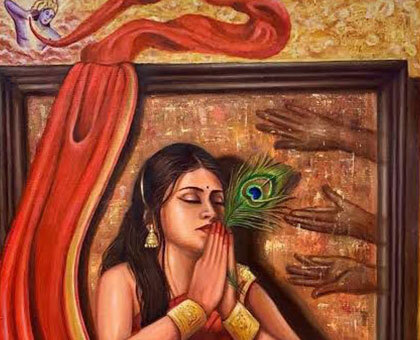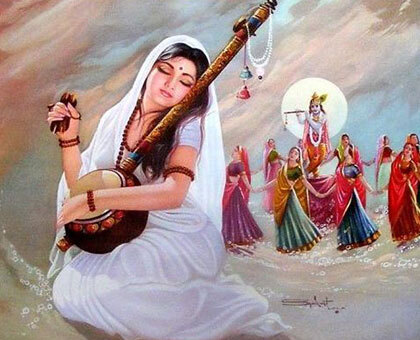
Women in Sanatan Dharma: A Historical and Scriptural Journey Over 5000 Years
Introduction
In the rich tapestry of Sanatan Dharma, women have not only been revered figures but also pivotal in shaping the cultural, spiritual, and social landscapes. My write-up aims to unfurl the intricate narrative of women’s roles, contributions, and significance in Sanatan Dharma, tracing their journey through a historical lens augmented by scriptural evidence over 5000 years. It delves into an exploration that transcends common narratives, offering an enriched perspective of their multifaceted existence and influence.
Women in Sanatan Dharma have been depicted as embodiments of power, wisdom, and grace. Their representation ranges from Vedic hymn composers to epic heroines and beyond, each echoing a profound spiritual essence. We embark on a meticulous journey through the annals of sacred texts, historical records, and cultural narratives to unveil a story of evolution, endurance, and enrichment.
The objective is to explore not only the explicit portrayals but also the nuanced expressions and experiences of women in the intricate weave of spirituality and society. The thesis unfolds a journey through epochs, unveiling how women have been integral in not only preserving the rich heritage of Sanatan Dharma but also in advancing its profound tenets. Through this exploration, readers will gain insights into the harmony between the spiritual, historical, and contemporary manifestations of women’s roles and significance in Sanatan Dharma, elevating the discourse from mere representation to deep, intrinsic essence.
In this write-up, we navigate through different historical periods, examining scriptural, cultural, and societal evidences, weaving a narrative that captures the enduring and evolving essence of women in the eternal flow of Sanatan Dharma.
The Vedic Era
The Vedic era, characterized by the composition of the revered Vedas, offers an enlightening lens through which the prominence of women in the spiritual and societal life of ancient India can be distinctly observed. This period, an epitome of enlightenment and spiritual awakening, showcased women not as peripheral figures but as central to the socio-religious fabric.
In the blossoming era of the Rigveda, the most ancient of the Vedas, one encounters a spectrum where the feminine was divine, and the woman was a seer. The sacred texts encapsulate hymns composed by Rishikas, or female sages, such as Apala, Lopamudra, Ghosha, and Vishwawara, whose poetic and spiritual acumen graced the pages of these holy scriptures. Each hymn is not merely a piece of literary art but a testament to the esteemed position women held in the spiritual domain.
Lopamudra, for example, was not just a composer of hymns but a formidable philosopher. Her dialogues and compositions reflect a depth of understanding, articulation, and authority. The Vedas, thus, were not gendered sanctuaries but open realms where spiritual wisdom from both men and women was equally cherished and documented.
The societal landscape of the Vedic era was reflective of this spiritual inclusivity. Women were esteemed participants in the Brahmayajna, the noble pursuit of knowledge, and the Grihastha, the household life. Their educational and spiritual pursuits were not just supported but were considered fundamental to the societal and spiritual welfare. The Vedic woman was a student, a teacher, a priestess, and a householder – each role echoing the harmonious blend of spiritual and societal duties.
Yet, the Vedic period was not an utopia without challenges. However, what distinguishes this era is the unequivocal recognition of women’s spiritual authority, societal rights, and intellectual capacities. Women’s contributions to the Yajnas (sacrificial rituals) and Sabha (congregations) were notable, reflecting a society where spiritual and societal roles were not rigidly defined by gender but were a testament to individual capacity and spiritual attainment.
It is essential to transcend the romanticized versions of history to grasp the authentic narrative. Women, during the Vedic era, carved their spaces not just through societal acknowledgment but through their intrinsic spiritual, intellectual, and societal contributions. Their hymns, teachings, and roles were as diversified and profound as their male counterparts.
As we traverse the historical lineage of women in Sanatan Dharma, the Vedic era stands as a foundational chapter. It encapsulates a narrative where the feminine was revered, the woman was empowered, and the societal fabric was woven with threads of gender inclusivity and mutual respect. Each hymn composed by a Rishika and every role assumed by a Vedic woman echoes through history, offering insights into an era where women were not just participants but significant contributors to the spiritual and societal narrative of Sanatan Dharma.
The Epic Narratives
The annals of Sanatan Dharma are richly adorned by epic narratives that have not only shaped the faith but have permeated the cultural, social, and moral fabrics of Hindu society. The Ramayana and Mahabharata, two colossal epics, serve as intricate tapestries where the roles and portrayals of women are as diverse as they are profound.
In the tranquil yet resilient character of Sita from the Ramayana, we encounter a paradigm of feminine grace, virtue, and fortitude. Sita isn’t merely a character but an ethos, embodying steadfastness, purity, and an unyielding fidelity to dharma. Her trials in the forest, her abduction by Ravana, and her unflinching integrity throughout the ordeal portray a character of immense depth and strength. The Ramayana, through Sita, unravels the narrative of a woman who, despite facing the harshest adversities, epitomizes dignity and virtue.

The Mahabharata presents a complex, multi-dimensional portrayal of women. Draupadi, with her formidable spirit, unwavering courage, and intricate complexity, becomes a character that encapsulates the multifaceted nature of womanhood. She is neither a silent sufferer nor a passive observer; Draupadi is vocal, assertive, and embodies a resilience that influences the epic’s narrative. Kunti, another pivotal character, embodies motherhood, wisdom, and moral complexity, revealing the nuanced portrayals of women’s roles in familial and societal dynamics.

These epics illustrate that women in Sanatan Dharma were not monolithic entities but were characterized by an intricate diversity. Their virtues, challenges, strengths, and complexities were not only acknowledged but became central themes in the epic narratives. Each female character is a nuanced portrayal, encompassing strengths, virtues, complexities, and moral quandaries.
Moreover, the epics aren’t just historical or mythical narratives but are imbued with deep spiritual symbolisms. Every character, including the female protagonists, symbolizes aspects of human psychology, moral dilemmas, spiritual quests, and the intricate dance between dharma (righteousness) and adharma (unrighteousness). Women, in these narratives, are not just characters but represent spiritual, moral, and psychological archetypes.
In examining the epic narratives within the broader journey of women in Sanatan Dharma, a profound revelation emerges. Women were not peripheral figures but were central to the unfolding of the epic narratives, moral discourses, and spiritual symbolisms. Each female character, with her distinct identity, virtues, challenges, and evolution, contributes to the enriched, multi-dimensional narrative of the epics.
Thus, in the grandeur of the Ramayana and Mahabharata, women emerge as complex, integral entities. Their portrayals are neither linear nor simplistic but are imbued with a depth that invites readers into a journey of exploration – of the feminine ethos, the human condition, and the intricate dance of dharma that defines the spiritual, moral, and cultural landscape of Sanatan Dharma.
The Classical Age
As we navigate through the panoramic historical vista of women in Sanatan Dharma, the Classical Age emerges as a pivotal chapter. This epoch, marked by intellectual renaissance, cultural blossoming, and spiritual deepening, unveils a narrative of women that is as richly textured as it is profoundly illuminating.
The proliferation of classical literature during this period, including iconic works such as Kalidasa’s Shakuntala and Bhasa’s plays, offer glimpses into the elevated status of women. These narratives portray women as figures of grace, wisdom, and authority. Shakuntala, for instance, isn’t merely a character but an embodiment of feminine grace, intellect, and spiritual virtue. Women, in these narratives, aren’t passive entities but dynamic characters driving the narrative, embodying complexities, and echoing the societal respect accorded to them.
The classical age was also characterized by a proliferation of learning and education. The esteemed Nalanda and Taxila universities weren’t just centers of learning but epitomized an era where knowledge and wisdom were revered. Women were active participants in this intellectual renaissance, both as students and teachers. They were repositories and disseminators of knowledge, contributing to the intellectual and cultural flourishing of the era.
Art and aesthetics were intrinsic to this period, with the creation of iconic sculptures, paintings, and architectural marvels. Women were both muses and creators. The intricate sculptures adorning temples of this age often depict women in diverse roles, reflecting a society where the feminine was celebrated, respected, and integral to the cultural and spiritual ethos.
Religious life during the classical age also echoed this reverence for the feminine. The worship of goddesses like Saraswati, the epitome of wisdom; Lakshmi, the symbol of prosperity; and Durga, the warrior goddess, underscored the multifaceted recognition of the feminine divine. Women were not just worshippers but were priestesses, carrying forth rituals and spiritual practices with authority and reverence.
However, like any historical period, the classical age had its share of complexities. While the portrayal and role of women were elevated, certain societal norms and restrictions began to crystallize. Yet, the endurance of the elevated depictions of women in art, literature, and religious life signals a continued acknowledgment of their intrinsic value.
In dissecting the narrative of women in the classical age, we encounter a mosaic of respect, recognition, and reverence, juxtaposed with emerging societal complexities. Women were not monoliths but depicted and treated with a diversity reflective of their multifaceted roles in society. As conduits of cultural, spiritual, and intellectual enrichment, the women of the classical age encapsulate an era where the feminine essence was not just blossoming but was integral to the societal, cultural, and spiritual renaissance of the time.
Medieval Period
The medieval period, marked by social upheavals, foreign invasions, and the advent of new political and cultural dynamics, introduced a significant shift in the experience and representation of women in Sanatan Dharma. Amidst the turbulence of change, the feminine ethos underwent a transformation that was both reflective of and influenced by the broader societal shifts.
During this era, the sanctity and freedom previously associated with women started to wane. The societal structure became more patriarchal, and the inclusive, elevated status women enjoyed in spiritual and social realms began to face constraints. Yet, even amidst these challenges, the enduring spiritual and cultural essence of women continued to find expression.
In the realm of spirituality, bhakti movement emerged as a significant chapter. Women saints like Meerabai carved indelible marks with their profound devotion and poetic brilliance. Meerabai’s poems, imbued with an intense devotion to Lord Krishna, are not just literary gems but reflect a woman’s unyielding spiritual quest amidst societal and familial adversities. The bhakti movement, with its emphasis on personal devotion, became a space where women’s spiritual voices continued to resonate.

The societal role of women during the medieval period was layered with complexities. The invasions and political instability contributed to a protective and restrictive approach towards women. The freedom and public participation that characterized the previous eras saw a decline. However, women continued to be the custodians of cultural and familial traditions. Their roles as mothers, wives, and daughters were accentuated, becoming the pillars upon which the continuity of cultural and familial legacies rested.
Scriptural interpretations also evolved. While the eternal texts remained, their interpretations became more rigid and conservative. Yet, the reverence for the feminine divine endured. Goddess worship, rituals, and festivals celebrating the feminine aspect of the divine continued to flourish, echoing the indomitable spiritual essence of the feminine in Sanatan Dharma.
Moreover, the resilience of women was prominent. Amidst restrictions, their influence in familial, cultural, and even political life was notable. Queens like Rani Lakshmibai of Jhansi showcased the indomitable spirit, bravery, and leadership that defied the restrictive norms of the era.
In essence, the medieval period was a complex epoch for women in Sanatan Dharma. It was a time of constriction yet resilience, challenges yet endurance. The spiritual, cultural, and societal narrative of women, though confronted with adversities, was not obliterated but continued to evolve, adapt, and find expressions. It underscores the enduring essence of the feminine spirit in Sanatan Dharma – an essence that could adapt, resist, and endure, weaving its narrative even through the intricate labyrinths of historical, political, and cultural transformations.
Modern Age
As we transition into the modern era, the narrative of women in Sanatan Dharma emerges from the historical silhouettes, unfettered, redefining itself amidst new paradigms, challenges, and opportunities. This epoch is marked by a renaissance, a resurrection of the ancient ethos, and an amalgamation of traditional wisdom with contemporary narratives.
In the context of spirituality, the modern age witnesses a resurgence of women as spiritual leaders, thinkers, and practitioners. Figures like Anandamayi Ma epitomize the re-emergence of the feminine spiritual authority. Her life and teachings, devoid of institutional affiliations yet profound in spiritual essence, mirror the ancient Rishikas – echoing a narrative where spiritual authority is intrinsic, unbounded by gender.
The societal structure, influenced by global trends and national reforms, undergoes a seismic shift. Women’s education, rights, and participation in public life see unprecedented advancement. Legal reforms, social movements, and progressive interpretations of scriptures redefine the societal narrative of women. They are not just recipients of change but are catalysts, shaping societal, political, and economic landscapes.
Women in contemporary Sanatan Dharma are professors, entrepreneurs, politicians, scientists, and artists. They are custodians of traditional wisdom and harbingers of modern innovation. The dichotomy of the ancient and the modern, the traditional and the contemporary, finds a harmonious confluence in the lived experiences of modern Hindu women.
Yet, the modern era is not devoid of challenges. Gender disparities, societal norms, and institutional barriers continue to exist. But what distinguishes this era is the dynamic engagement of women in confronting these challenges. They are vocal, active, and integral to the discourse – not just responding to but shaping the narrative.
Scriptural engagement also witnesses a transformation. Women, equipped with education and freedom, delve into the scriptures with renewed vigor. They are not just passive recipients of spiritual wisdom but are interpreters, critics, and disseminators. The Vedas, Upanishads, epics, and Puranas are not distant texts but living narratives, engaged and explored by women with authority and insight.
In the spiritual rituals and practices, women’s participation is profound. Festivals, rituals, and spiritual gatherings echo the multifaceted participation of women. They are priestesses, devotees, organizers, and leaders – each role echoing a narrative of spiritual inclusivity.
In sum, the modern age for women in Sanatan Dharma is an era of dynamic engagement, transformation, and redefinition. The echoes of the ancient Rishikas and the revered feminine divine find resonance in the lived experiences of contemporary Hindu women. It’s an era where the spiritual and societal narrative of women is not a historical reflection but a living, evolving, dynamic reality – echoing the eternal yet ever-evolving essence of Sanatan Dharma in the myriad expressions of the feminine spirit.
Continuities and Transitions
One of the striking continuities across ages is the spiritual essence of women. From the Vedic Rishikas to the bhakti saints and contemporary spiritual leaders, the feminine spiritual narrative remains unbroken. Women have been and continue to be integral to the spiritual discourse of Sanatan Dharma.
However, societal roles have seen transitions. From the comparative equality of the Vedic period to the protective restrictions of the medieval age, and the subsequent re-emergence of women’s societal prominence in the modern era, the journey has been intricate. Each era reflects a dynamic interplay of external influences, internal adaptations, and the enduring essence of the feminine spirit.
In scriptural engagements, women have transitioned from being composers to recipients, and now, to interpreters and critics. The modern Hindu woman engages with ancient texts with a blend of reverence and critical inquiry, reflecting an empowered, informed, and dynamic stance.
Conclusion
The narrative of women in Sanatan Dharma is a richly embroidered tapestry, intricately woven with threads of spiritual luminosity, societal resilience, and transformative adaptability. From the illuminating wisdom of Vedic Rishikas to the iconic fortitude of epic heroines, and the dynamic resurgence in the modern epoch, women have been, and continue to be, intrinsic to the spiritual and cultural essence of Hinduism. Every era, marked by its unique contextual challenges and opportunities, reflects the diverse manifestations of the feminine spirit, echoing an innate resilience and adaptability. The perennial narrative is not of passive endurance but of active creation, preservation, and transformation. Women in Sanatan Dharma are not mere reflections of their times but active shapers of epochs, embodying the eternal and the temporal, the spiritual and the societal.
The journey of women in Sanatan Dharma is not linear but a rich mosaic, characterized by continuities, transitions, challenges, and triumphs. Each era, with its unique contexts, has contributed to the evolving narrative of women – a narrative that remains integral to the essence of Sanatan Dharma. The feminine spirit, revered, challenged, adapted, and resilient, continues to weave its narrative, echoing the eternal yet evolving essence of Sanatan Dharma through the ages.
In essence, the recommendation is a return and a progression – a return to the foundational respect, equality, and reverence, and a progression to adaptive, dynamic, and inclusive manifestations that reflect the contemporary contexts and future aspirations. Women in Sanatan Dharma are bridges connecting epochs, echoes of the eternal, and harbingers of the evolving narrative of one of the world’s most ancient, diverse, and rich traditions.
